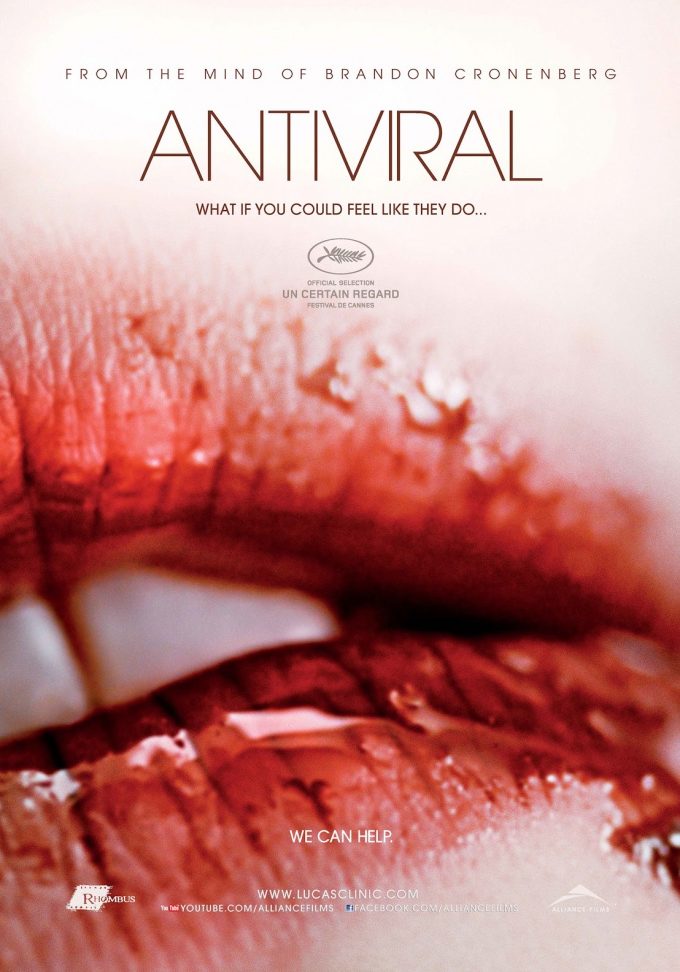A Dance with the Viral Macabre: An ‘Antiviral’ Appraisal
“You have to contact the virus to get the full picture.” These words resound with ominous undertones as they beckon you into the unsettling world of ‘Antiviral’, a horror film that dissects our obsession with celebrity culture. Crafted by Brandon Cronenberg, son of the legendary David Cronenberg, the 2012 release embroiders its narrative with a chilling, spoiler-free synopsis: In a dystopian future, the lines between idolization and consumption blur. Here, the antiseptic white labs of the Lucas Clinic offer fans the chance to be infected with the same viruses and ailments that plague their idols, worshipped to the point of pathological communion. We follow Syd March, an employee who becomes embroiled in a deadly scheme after pilfering such pathogens for profit.
Pallor of Dread: Atmosphere and Tone
The ambiance of ‘Antiviral’ is a slow-burning peril that seeps into the psyche. Unlike traditional horror, the terror isn’t in the fear of what leaps from the shadows, but rather from the grotesque realization of humanity’s own vanity and decay. Cronenberg meticulously crafts an atmosphere less about jumpscares and more about a persistent sense of doom through a world draped in sterile bleakness and punctuated by bouts of clinical brutality.
As we navigate this ghastly dystopia, the tension emerges from the pervasive normalcy of the horrific practices depicted. The fear here is visceral and intimate, festering not from supernatural threats but the body itself—our temple turned traitor.
Through a Lens, Darkly: Cinematography and Visuals
Cinematography in ‘Antiviral’ is a silent narrator in its own right. The director employs an aesthetic of stark white backdrops against the sanguineous, the purity and horror melding in a memorable juxtaposition. Lighting is purposefully harsh, cultivating an air of sterility that paradoxically feels contaminated. Intriguing camera angles and lingering close-ups delve into discomfort, while the scarcity of special effects makes their sparse usage all the more impactful.
The color palette is intentionally muted, a canvas for the splashes of red that suggest both allure and alarm. It’s this minimalist approach, devoid of ornate distraction, that forges an environment where even the simplest visuals—be it a syringe or a blood cell under a microscope—become emblems of horror.
Whispers and Screams: Soundtrack and Performances
The cacophony of the soundtrack ebbs and flows with clinical precision, mirroring the heartbeat of the film—sometimes barely perceptible, then abruptly thrust into urgency. The use of sound—or indeed, its marked absence—never fails to sharpen the looming disquiet, creating auditory discomfort that is as compelling as it is disconcerting.
Central to the narrative’s punch, though, is Caleb Landry Jones’ portrayal of Syd March. Jones embodies a man numbingly detached, yet palpably suffocating within the trappings of the world around him. Characters strike a chord with their authenticity, revealing revulsion not only in overt acts of terror but in the everyday with an unnerving believability that anchors the film’s horror.
A Mirror to Our Fears
Employing strains of body horror—a subgenre its director is no stranger to—’Antiviral’ excels at unearthing horror in the organic, the viral. The reel tactic here is not gore for the sake of shock, but a strategic use that reinforces the narrative’s psychological onslaught. The effectiveness is in its subtlety, the undercurrent of unease that flows throughout.
Underneath its skin-crawling surface, the movie is rife with social commentary. It digs beneath the idolatrous veneer of celebrity worship, intertwining its horror elements with explorations of identity, privacy, and the darker facets of human desire, adding profound resonance to the story.
Is ‘Antiviral’ a fright fest in the traditional sense? No. It’s something perhaps more disquieting—a fear that festers long after the credits roll. Its potency lies in the unnerving realization that the horror portrayed is not only plausible but is a mere amplification of the traumas of our own celebrity-centric society.
If you’re in search of the adrenaline rush of jump scares, this film may not be your ticket. ‘Antiviral’ will resonate more with those who delight in the introspective, the existential, and yes, horror connoisseurs seeking something that dares to deviate from formulaic frights. Conversely, those with a low threshold for body horror may want to tread cautiously.
Though not as mainstream as conventional horror fare, ‘Antiviral’ stands as an impressive contemporary piece that would find kinship with the likes of ‘Videodrome’ or ‘The Fly’, while it also carves its own niche in the body horror pantheon.
Final Diagnosis
With its stark and unflinching portrayal of the grotesque both within and without, ‘Antiviral’ is an accomplished piece of horror cinema that banks on its surreal reflection of our society’s darkest curiosities. The film’s strengths are its atmosphere, unsettlingly precise performances, and the interrogative themes simmering beneath its surface. Its weaknesses, if any, stem from pacing that may alienate those accustomed to a more immediate payoff.
I recommend ‘Antiviral’ to the aficionado ready to be disturbed on a level more profound than mere surface scares. It’s a macabre meditation, a chilling tableau of the horrors that may lie ahead—or indeed may already exist within the twisted sanctum of our civilization’s obsessions.




